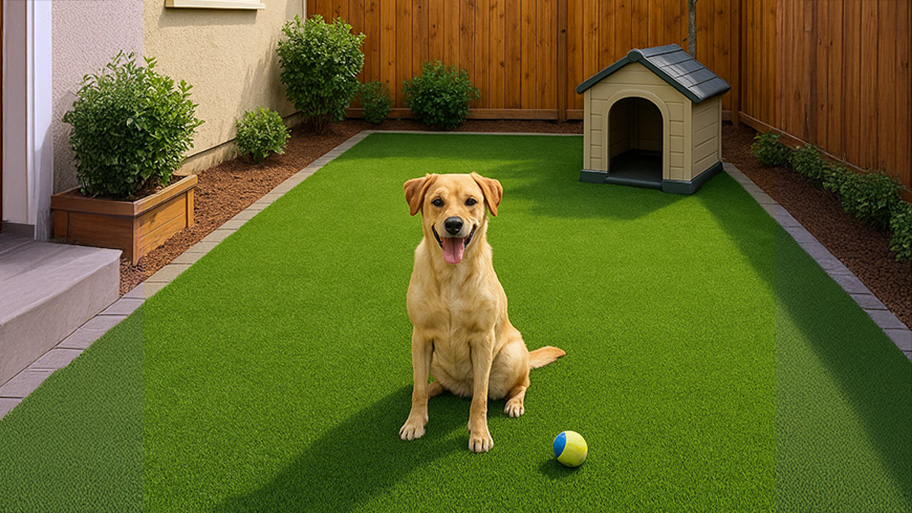
What are average sod installation prices? Learn how much sod costs based on factors like square footage, land prep, land condition, and more.
Mulch doesn’t have to be a barrier for your planting plans


Organic mulches protect soil and add nutrients as they break down.
The most important part of planting in mulch is keeping the soil separate.
Mulch can deprive plants of nitrogen when mixed into the soil.
Use containers to keep soil and mulch separate when planting.
Planning ahead isn’t always easy, especially when you’re a gardener. Once those baby impatiens and petunias start to take off, the creative wheel inevitably spins and you start thinking of what you could plant next. There’s just one problem: You’ve already mulched.
Mulch helps block the growth of pesky weeds—but does that mean it’s also a barrier against adding new plants? The good news is it’s not too late. Here’s what you need to know about planting flowers in mulch and how to do it successfully.
A tasty layer of organic mulch offers a number of benefits to your flower bed and vegetable garden.
Aside from the clean, uniform look it brings, mulch also:
Adds nutrients to the soil from microorganisms as it decomposes
Helps prevent soil moisture lost through evaporation
Insulates plants from harsh heat and cold
Prevents weed growth around your plants
Minimizes soil erosion during heavy rain, wind, and snow

While it’s possible to plant flowers after you’ve added the top layer of mulch, it’s not the ideal sequence for building a garden. This is because organic mulches (such as wood mulch) can actually do harm if they’re mixed into the soil.
When mulch and soil commingle, soil microbes can deprive your plants of nitrogen as they break down the organic matter. To get the full nutritional, weed-blocking, and climate-controlling benefits, organic mulch should always stand as a separate top layer.
When planting your spring flowers in mulch, it’s important to consider whether it will stifle growth. Just as a thick layer of mulch blocks ugly weeds from popping up, it can also stifle the spread of certain flowers (especially perennials). If you choose to plant varieties that will spread as they grow, leave a good amount of soil open until the plant is more mature.
If you’ve covered your flower bed with a layer of inorganic mulch, such as pebbles or shredded rubber, you won’t have the same concerns of mixing it into the soil. However, many inorganic mulches are quite heavy and can be difficult to move out of the way, let alone plant in.
All that aside, inorganic types of mulch offer little benefit beyond aesthetics and some level of weed control. Organic mulches eventually break down and enrich the soil, while inorganic mulches only sit on the top layer.
They can even compact soil or cause it to become too hot in the sun. While inorganic mulches are a fine choice for filling in gaps between flowers and shrubs, organic varieties are better for covering them.
When planting flowers in mulch, the most important part is preventing the mulch from mixing into the soil. Move the mulch out of the way before you plant—and give yourself way more room than you think you’ll need.
Here’s how to plant in an already mulched flower bed:
Carefully remove the top layer of mulch and pile it off to the side.
Once you’ve reached bare soil, dig a hole for the plant and keep the dug-up soil in a container.
Add the plant to the hole.
Fill up the hole with the soil from the container.
Replace and smooth out the mulch, maintaining 2 to 3 inches of space around the flower stem.
From average costs to expert advice, get all the answers you need to get your job done.

What are average sod installation prices? Learn how much sod costs based on factors like square footage, land prep, land condition, and more.

Ivy might look pretty, but you probably don’t want it in your garden. Learn how much it’ll cost to remove ivy by type, treatment method, and more.

Leveling your yard can help with drainage and prevent damage to your home. Learn the cost to level a yard in Columbus, OH, and what factors can affect the price.

Wondering how to clean dog urine off artificial grass? Revitalize your turf (even if it's pet-friendly) with this simple seven-step cleaning guide.

Discover how to remove hedges from your yard safely and effectively when changing the landscaping or eliminating diseased specimens.

Learn how to remove juniper bushes, regardless of their size, in four simple steps to make room for other landscaping or eliminate an overgrown bush.